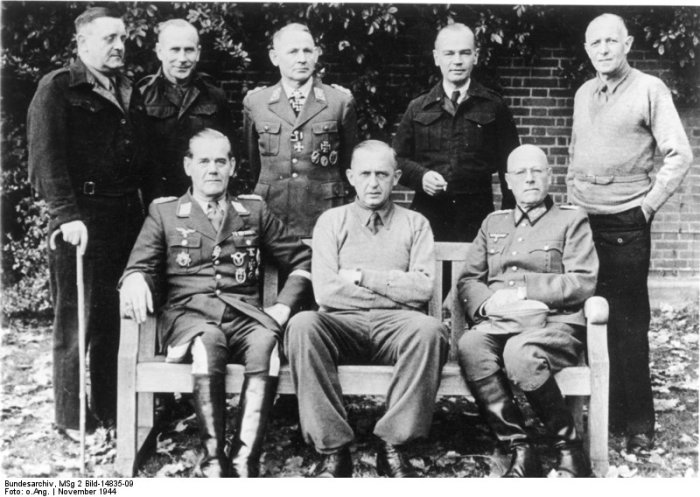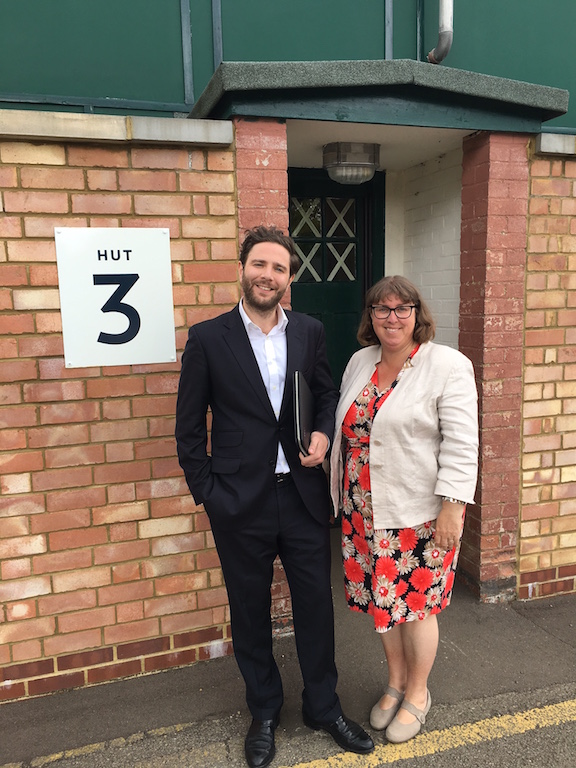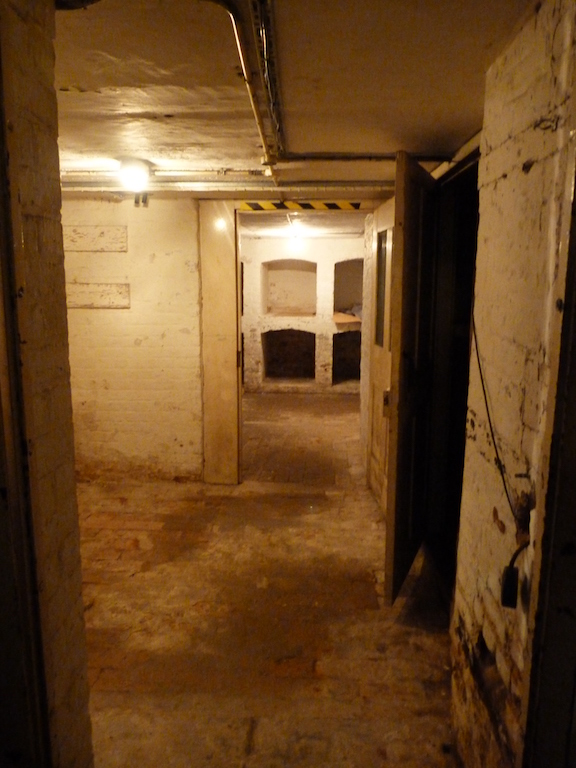
Wars produce innovation and ingenuity in all sorts of shapes and guises. During the Second World War this was particularly so, and as a result we have probably all heard of radar, bouncing bombs and swimming tanks. Most people these days will also have heard, despite many years of secrecy, of the innovative approaches adopted at Bletchley Park to gather vital signals intelligence from Germany and its allies. However, I suspect fewer people will be aware of another piece of unusual and innovative intelligence gathering that went on during the War.
Right at the start of the Second World War an organisation was set up that would become known as the Combined Services Detailed Interrogation Centre (CSDIC). Its purpose was to interrogate enemy prisoners of war. It was run by an organisation called MI19 and led by a man with extensive experience in intelligence operations, Lieutenant Colonel Thomas Kendrick. The organisation was initially located in the Tower of London, but soon moved to Trent Park in Cockfosters in the north-west London suburbs. Initially any prisoner, regardless of rank, who the authorities thought might have useful intelligence was sent to Trent Park. Whilst incarcerated, unbeknownst to them, they were being listened to via microphones ingeniously concealed about the property. Encouraged by ruses such as manufactured magazines and newspapers with leading articles, the prisoners were induced to talk to each other whilst all the time being overheard by ‘secret listeners’ based in the cellars of the house. These listeners were mostly German exiles (many Jewish) who then translated and relayed the content of the conversations. These conversations in turn provided interesting and useful intelligence.

In 1942 the success of this operation meant that two further facilities were created, one at Wilton Park in Beaconsfield, the other at Latimer in Chesham. This also brought a refined focus for Trent Park where the population became very high powered with the main inmates being senior officers and generals. The activities undertaken in all three houses were of great value. Lulled into a false sense of security by their comfortable surroundings, the prisoners revealed all sorts of intelligence. But it was probably Trent Park, with its population of senior German officers, that revealed the most. When they let their guard slip the conversations amongst themselves revealed secrets of invaluable use to the Allies.

They overheard conversations as early as May 1943, that confirmed that Germany was developing the V-2 rocket at Peenemünde and which led to the bombing of this site in August of the same year. Other conversations gave clear evidence of the atrocities that were being committed against the Jews. In short these facilities, and especially Trent Park, were a key elements in the complex and highly successful Allied intelligence gathering machinery developed in the Second World War. And like most of its counterparts, such as Bletchley Park, the full story of what happened at Trent Park was not known until fairly recently. As a result, and again like Bletchley Park, those who occupied the buildings after the War had no idea of the historical importance of the places they were in.
Post-war Trent Park was taken over by the Ministry of Education and initially became a teacher training college, before becoming part of Middlesex Polytechnic (later Middlesex University). It was then sold to a Malaysia education institution in 2013 which, shortly afterwards, went into liquidation. Finally it was acquired by a property development company who are working on plans for the site. These plans currently include an intent to turn over part of the site to a museum telling the story of the Second World War activities conducted at Trent Park, although there is concern that this museum will not do justice to the fascinating story.
This week I had the opportunity to meet with a couple of people, Dr Helen Fry and Councillor Jason Charalambous, who are spearheading the campaign to try to make sure that any museum at Trent Park does indeed fully represent and commemorate the work undertaken there during the Second World War. Helen is an author and historian who has written about Trent Park (her book The M Room: Secret Listeners who Bugged the Nazis in WW2 was published in 2012), whilst Jason is a local resident and councillor.

I met Helen and Jason at Bletchley Park in order to share with them the journey Bletchley Park had gone on in its transformation from a set of largely derelict buildings to the successful heritage attraction it is today. It was clear that there are parallels between the process that Bletchley Park has gone through and that which they are on at Trent Park. They updated me on their campaign to Save Trent Park, and they have made an impressive start. There is a petition organised, a Facebook page and an active Twitter presence @SaveTrentPark. There is also an ongoing dialogue with the developer to try to shape the plans to meet everyone’s needs.
But I wanted to understand what could be saved and how it could be made accessible and engaging to the public. The campaign’s online petition states as its first aim:
‘…the establishment of a museum across the entire ground floor and relevant rooms of the basement of the mansion house highlighting the crucial role it played in WWII…’
Whilst the developer has indicated that they are prepared to accommodate some form of museum in the main Grade II listed building the current conflict is over how much of the building should be made available to the general public. The campaigners are arguing that the cellars (pictured below) where the ‘secret listeners’ operated should be preserved and interpreted for visitors. This seems a relatively easy and non-contentious step, and it is not difficult to envisage how some imaginative and engaging audio-visual interpretation and set dressing could turn this area into an atmospheric experience.

The more controversial element of the campaign is over control of the whole of the ground floor of the mansion house, as I suspect that will also be prime real estate for the developer. As Helen and Jason very clearly articulated, the ground floor of the Trent Park mansion building also has great historic significance. In one room Thomas Kendrick had his office, in others the German inmates lived and interacted, and in doing so revealed their secrets. There are also other elements in the ground floor rooms that would merit saving such as some rare Rex Whistler murals. In short much more of the main building is of historic value than the developers currently appear to be willing to make available for use as a museum.
The passion of the campaigners is clear and the story they wish to tell is one that is well worth telling. Like other Second World War sites such as the Churchill War Rooms in Whitehall, Bletchley Park or the Western Approaches Museum in Liverpool, what Trent Park has is that sense of place. That sense that you can stand somewhere and feel the history, and that you can walk in the footprints of the people who made it. Thus whilst developers need to get a return on their investment, and as a nation we need more housing, it would be nice to think that an accommodation could be brokered at Trent Park. This might then allow important parts of the site to be preserved and interpreted so that generations to come can marvel at the innovation and ingenuity that this nation showed in gathering intelligence during some of its darkest days.
Once again great digging up of unknown but significant history. Thank you, for another thought provoking glimpse into history.
LikeLiked by 1 person
Thanks Brian. There is so much ‘unknown’ history out there! And it’s great to be able to help support such campaigns.
LikeLike
Rather beautifully written. And makes you want to find out more.
LikeLike
Thank you Hanya. Much appreciated. I hope you have fun finding out more.
LikeLike
Reblogged this on laramaynard.
LikeLike
Thank you.
LikeLike